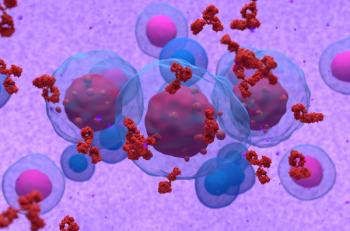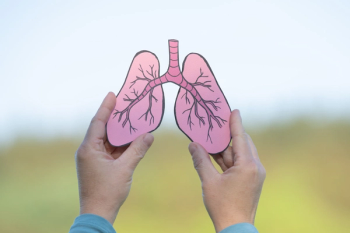
When to Call, When to Counsel: Serotonin Syndrome
The symptoms of serotonin syndrome often include autonomic dysfunction, neuromuscular excitation, and altered mental status.
We often see warnings about
Serotonin syndrome is caused by elevated serotonin in the central and peripheral nervous system that causes a triad of symptoms. The symptoms of serotonin syndrome, which present within hours of ingesting the offending medications, often include autonomic dysfunction, neuromuscular excitation, and altered mental status.1
It is important to note that not all symptoms of the triad present simultaneously; however, approximately half of patients present with the autonomic symptoms of diaphoresis and tachycardia.1 Additionally, the most common neuromuscular symptoms include myoclonus and hyperreflexia, whereas the altered mental status typically precipitates as confusion and agitation.1,2
When do we call a physician or refer a patient experiencing symptoms?
The highest risk combinations are often when 2 or more medications, that work by different mechanisms to increase serotonin, are present in the body. This can occur when prescribing a new serotonergic medication, increasing a dose of a medication, or switching medications without an adequate washout period (Table 1). Monoamine oxidase inhibitors (MAOI) and those with similar properties, such as metaxalone, linezolid, and methylene blue, should be avoided with other serotonergic medications due to more associated severe toxicity and fatalities.1,2
Click to enlarge
If a patient notifies you of spontaneous clonus (involuntary muscle contractions) or new tremor and hyperreflexia (feeling twitchy), this is often a strong indication of serotonin syndrome and immediate referral to emergency services is recommended.3
Combinations such as inducible or ocular myoclonus (uncontrollable eye movements) plus agitation or diaphoresis (unusual sweating), hypertonia (stiff muscles) with ocular or inducible clonus plus a temperature over 100 degrees Fahrenheit are also highly selective diagnosis criteria for serotonin syndrome and require immediate referral to emergency services.4-6
What do we say to a physician?
After appropriate introductions and identification of the patient, start by reporting to the physician what the patient is currently taking in relation to the interaction concern. This will ensure that the doctor has a complete medication history and cover any unknowns in the medication list; especially if there are multiple providers involved.
Next, explain that the combination of the offending medications may put the patient at risk for serotonin syndrome. Explain the risk of the interaction to the physician (Table 1) and how the symptoms may manifest. Lastly, the most important component of any call to a physician is having an alternative medication choice or a plan for therapy.
Plans for therapy can be as simple as titrating the dose(s) more slowly, using the lowest doses possible, and monitoring for symptoms every 24 to 48 hours.3,5
When do we counsel?
It's recommended to counsel all patients that are starting or increasing an SSRI, SNRI, MAOI, migraine medication (triptan), pain medication, or anyone who may concurrently take more than 1 serotonergic medication. It is also recommended to ensure patient counseling on certain medication combinations.
Counsel all patients using paroxetine or fluoxetine in combination with tramadol due to long medication half-life, additive serotonergic properties, and inhibition of CYP2D6.3 Additionally, counseling anytime a patient is combining 1 or more opiates; or combining serotonergic medications with those containing tricyclic properties (tricyclic antidepressants, clomipramine, imipramine, cyclobenzaprine, etc.) is supported by literature.1,5,6
What do we counsel on?
The first step in counseling on serotonin syndrome is to avoid scaring the patient, therefore wording is important (Figure 1). It is important to emphasize that cases are rare and symptoms do occur very quickly typically within the first 24 hours to the first few days of use.1,3
Describing the symptoms of serotonin syndrome in simple and plain language is highly recommended. Descriptions such as unusual sweating, fast heart rate, feeling twitchy or experiencing involuntary muscle contractions, having stiff or jerky muscles, changes in vision or uncontrollable eye movements, getting unusually agitated, or feeling confused are all good substitutions for the technical jargon.7
During the counseling sessions, inquire about the use of herbal or dietary products, other prescription medications, and any OTC medications. Update all allergies and health conditions in the patient’s profile to ensure that future prescriptions will flag precautions in your software.
Ultimately, the better you know your patients, the more you can prevent medication-related problems. Trust your mental red flags and if you feel uncomfortable with a prescription follow-through, gather more information, and always document your counseling and interventions.
Figure 1. Patient-Centric Counseling Guide8
Click to enlarge
References
1. Robert ZW, Vishal V, Sukhdeep K,Nathan WH. Serotonin syndrome: Preventing, recognizing, and treating it. Cleve Clin J Med. 2016;83(11) 810-816.
2. Simon LV, Keenaghan M. Serotonin Syndrome. [Updated 2022 Feb 4]. In: StatPearls [Internet]. Treasure Island (FL): StatPearls Publishing; 2022 Jan-. Available from:
3. Scotton WJ, Hill LJ, Williams AC, Barnes NM. Serotonin Syndrome: Pathophysiology, Clinical Features, Management, and Potential Future Directions. Int J Tryptophan Res. 2019;12:1178646919873925. Published 2019 Sep 9. doi:10.1177/1178646919873925
4. Dunkley EJ, Isbister GK, Sibbritt D, Dawson AH, Whyte IM. The Hunter Serotonin Toxicity Criteria: simple and accurate diagnostic decision rules for serotonin toxicity. QJM. 2003; 96(9):635-42.
5. Foong AL, Patel T, Kellar J, Grindrod KA. The scoop on serotonin syndrome. Can Pharm J. 2018;151(4):233-239.
6. Ables AZ. Prevention, Diagnosis, and Management of Serotonin Syndrome. American Family Physician. 2010;81(9):1139-1142.
7. Zieve D. Serotonin syndrome: Medlineplus medical encyclopedia. MedlinePlus. https://medlineplus.gov/ency/article/007272.htm. Accessed April 3, 2022.
8. Garling KA. Revitalization of a communication pharmacy course: The journey of reframing student perceptions. Curr. Pharm. Teach. 14(2):138-144. https://doi.org/10.1016/j.cptl.2021.12.002.
Newsletter
Stay informed on drug updates, treatment guidelines, and pharmacy practice trends—subscribe to Pharmacy Times for weekly clinical insights.
















































































































































































































